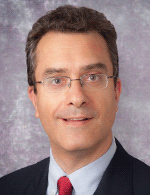We have three interconnected goals: to understand cellular growth and proliferation in the heart; to provide mechanistic explanations for the huge variation of regenerative activity seen in biology; and, drawing on the answers to these two fundamental questions, to conduct translational research that implements our basic research results for the diagnosis and treatment of heart disease. Prior to our work, it was commonly thought that after birth heart muscle cells, (cardiomyocytes) are in irreversible proliferative arrest and that myocardial regeneration does not happen. It was unknown whether cardiomyocyte proliferation cold be stimulated after birth, let alone whether this would regenerate myocardium.
We have shown that the post-natal mammalian heart has cardiomyocytes that can be stimulated to divide and give rise to myocardial regeneration. We demonstrated that a peptide of periostin, a component of the extracellular matrix, and neuregulin1, a growth factor, stimulate myocardial regeneration. Both factors stimulate a subpopulation of mononucleated cardiomyocytes to divide.
We have developed a cellular growth chart of the human heart, which shows that cardiomyocyte proliferation and enlargement both contribute to myocardial growth between birth and adulthood. The finding that cardiomyocytes proliferate in young humans leads to conclusions, on which our current research efforts are based: First, young humans may be able to regenerate heart muscle. Second, cardiomyocyte proliferation may be altered in myocardial diseases. Third, it raises the possibility to stimulate cardiomyocyte proliferation therapeutically with the goal of promoting myocardial regeneration in young humans.
